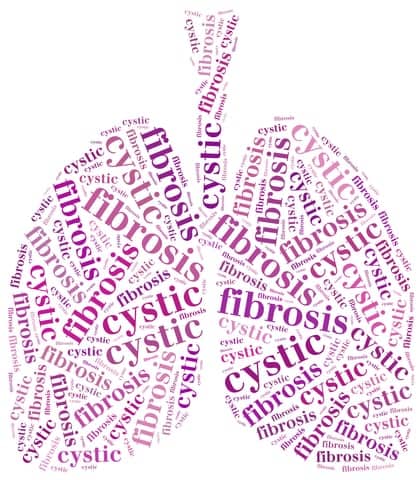Advancements in technology are helping pediatric patients and young people with cystic fibrosis make the most of their daily airway clearance therapy.
For cystic fibrosis (CF) patients, choosing a device for routine airway clearance is at the discretion of physician and patient; according to guidelines put out by the Cystic Fibrosis Foundation, no one therapy is superior to another. But clearing out airway secretions, however a patient chooses to do it, is considered essential, life-preserving therapy for people with CF. Manufacturers are responding to that need with a variety of devices designed for efficiency and user-friendliness.
One of the first devices to replace manual airway clearance therapy was the high-frequency chest wall oscillation (HFCWO) vest, which vibrates a patient’s torso with pulses of air produced by a generator in order to loosen mucus. There are three major players in this market: InCourage from RespirTech; the SmartVest from Electromed; and The Vest from Hill-Rom. For those who have access to them, such devices supplement or replace manual therapy from caretakers or respiratory therapists, providing relief for families and autonomy for patients.
To be effective, of course, the device has to be used, and used regularly. Patients are less likely to follow therapies that are difficult, inconvenient, or uncomfortable. The passive nature of the vest means that patients are more likely to use it than some other airway clearance techniques, said Jonathan Finder, MD, a pediatrician at Children’s Hospital Pittsburgh, making it a therapy he recommends. “If you do [airway clearance therapy] for half an hour twice a day that’s a lot better than doing it for five minutes twice a day,” he said.
With that in mind, all three companies are vying to make their product more comfortable for patients so that they will find it easier and less onerous to adhere to therapy.
RespirTech chief commercial officer Bob Buehler said the InCourage vest has a venting component meant to reduce pressure on the patient’s chest. “[It] allows the chest to expand with the vest when the patient takes a deep breath, so it’s more comfortable,” he said. The latest machine is also 30% quieter than its predecessor, he said, and it comes with colorful decals so the patient can customize the way it looks.
Electromed’s SmartVest is also designed to make sure patients don’t feel they are fighting the machine for breath, said Kathleen Skarvan, president and CEO of Electromed. “We’ve tuned our device so it provides the ability to breathe more easily during treatment,” she said, explaining that the SmartVest cycles between high and low pressure so that the patient can breathe deeply while the lowest pressure is applied. The latest version of the Smartvest is also smaller, quieter, and lighter than previous versions, she said.
Two relative newcomers offer a different selling point. The Afflovest, which was given pre-market approval by the FDA in 2013, and the Monarch, manufactured by Hill-Rom and given the same approval just this March, both offer portable HFCWO therapy. The vibrations are generated with battery-powered motors sewn into the vest. That means patients don’t have to sit still, tethered to a generator, to comply with therapy.
It’s something patients are excited about, said Mary Lester, RRT RCP, clinical coordinator at the Center for Cystic Fibrosis at Keck Medical Center in Los Angeles. Many of her patients saw the Afflovest advertised on Facebook and came to her for more information about it. “I’m a little hesitant when new tech comes out,” she said, but the Afflovest has been well-received by patients. Although some clinicians worry that there is limited data on the effectiveness of portable vests, she noted that there isn’t much data available for most other airway clearance therapies either.
Spokespeople for International Biophysics Corp, which manufactures the AffloVest, attest to its efficacy. “The AffloVest uses mechanical oscillation to loosen and mobilize secretions, and that has been clinically demonstrated to be effective in several clinician papers over the years,” they wrote in an email to RT.
Not all vest manufacturers are unveiling portable vests, in part because they aren’t only courting CF patients. Electromed’s SmartVest is also designed to make sure patients don’t feel they are fighting the machine for breath, said Kathleen Skarvan, president and CEO of Electromed. “We’ve tuned our device so it provides patients the ability to breathe more easily during treatment,” she said, explaining that the SmartVest cycles between high and low pressure so that the patient can take deep breaths during treatment. The latest version of the SmartVest includes SmartVest Connect wireless technology, a personalized HFCWO therapy management portal to make it easy for the patient and healthcare team to track therapy performance and collaborate in treatment decisions, she said.
“I certainly understand the appeal for younger adults and people that are healthy and want to administer their therapy while doing other activities,” Skarvan said. Electromed does not make a portable HFCWO system but does sell and distribute the Aerobika OPEP device, a proven, mobile airway clearance therapy. Much of their outreach, as is the case with other manufacturers, is aimed at people with compromised pulmonary function due to chronic diseases and conditions, such as bronchiectasis and chronic obstructive pulmonary disease (COPD). “We are assessing the market for mobile chest physiotherapy, wanting to understand more thoroughly what is the best and most effective approach for the patient. It may take some time to work through that,” she said.
Another emerging trend among HFCWO vests is usage monitoring. Electromed, Hill-Rom, and RespirTech are all rolling out Bluetooth-enabled usage tracking. While it’s too soon to tell if insurance companies might use this information to inform reimbursement (as is the case with CPAP therapy, for example) the data could be sent to the manufacturer, the clinician, and the patient for review.
Companies and clinicians alike see usage tracking as a tool for assessing patient progress and getting them on the right therapy at the right time. RespirTech, for example, is testing a pilot application in some clinics that would act as an interactive platform for patients and their doctors. “The app does things like lets [patients] set goals, lets them write notes back to their clinician, or make a comment when instead of vest therapy they might have used something else on a day. So it’s more representative of how they might use the product in their life than just taking data from one machine,” Buehler said.
Lester is optimistic about incorporating usage tracking into patient care. “I don’t want anything to be punitive,” she said. If it turns out that patients aren’t using the vest as often as they say they are, that information could be used to prescribe a more appropriate therapy or educate patients about the benefits of regular therapy.
“The angle I would look at it is, maybe there’s a barrier to using it, maybe this isn’t the main device for you, or maybe patients use it when they feel they need it, but not as many of them are being proactive,” she said.
Other Options
Vests are not the only options out there for CF patients. Even for those who own and prefer a vest, a handheld device can be an alternative used during spots of down time. That kind of portability and flexibility is especially true as CF patients live longer lives and must incorporate their therapy regimes into increasingly busy schedules. The acapella, a positive expiratory pressure (PEP) device, is not new, but more recent versions have become easier to clean and use in conjunction with nebulizer therapy. The Aerobika, too, can be used with inhaled medication and can be easily taken apart and cleaned.
Lester also credits the eFlow rapid nebulizer with cutting inhaled treatment time in half. “We try to think of ways to adapt these therapies to busy life styles, so technology is advancing and helping with that,” she said. But she says not all patients have access to all devices. “That’s my job in the clinic is to identify barriers to getting these therapies done and helping patients get the equipment they need, and that depends on their desire and their buy-in to getting these therapies and it depends on what insurance they have. Their resources really matter.”
For inpatients, the options are a little different. All three companies make versions of vest therapy that are appropriate for hospital use; they include vibrating garments that can be worn on top or around a patient’s torso and are disposable. One inpatient device that Finder likes is the MetaNeb from Hill-Rom, a variation on intrapulmonary percussive ventilation. It operates like “a vest from the inside out,” he said.
A Changing Landscape
Lester noted that prescriptions for airway clearance therapies, no matter what specific therapy is used, could change with the promising genetic treatments coming out for CF.
“Now they’re on drugs that are correcting the defect at the gene level, so they’re decreasing their symptoms. So patients are kind of feeling this freedom that ‘maybe this drug is making enough changes inside of me that I don’t have to maintain this level of care,’” she said. “So that’s going to be another aspect of this disease that we’ll be dealing with in the next five to 10 years. Does everybody need to do two hour sessions of airway clearance a day? Maybe not anymore.”
Airway clearance therapy techniques are hard to study because of the demands they make on patients participating in clinical trials, according to an editorial in the BMJ journal Thorax. “This is a rare area of clinical research in which the ‘perfect storm’ of strong preference, lack of blinding and the requirement for effortful and demanding participation over long intervals will continue to threaten any serious effort to find the best ACT for patients with CF,” the author, Eleanor Main, PhD, wrote. “This will be a spectacular waste of time and money and a terrible disservice to patients with CF.”
Main recommends accounting for patients’ preference in long-term studies and using a more clinically relevant outcome than forced expiratory volume in one second (FEV1). Of course, clinicians who work directly with CF patients already know that patient preference is essential for success in airway clearance therapy. Fortunately, there are a number of options out there for patients and their healthcare teams to discuss. RT










what about the VibraLung? Much better than my vest and I can take it with me anywhere too.